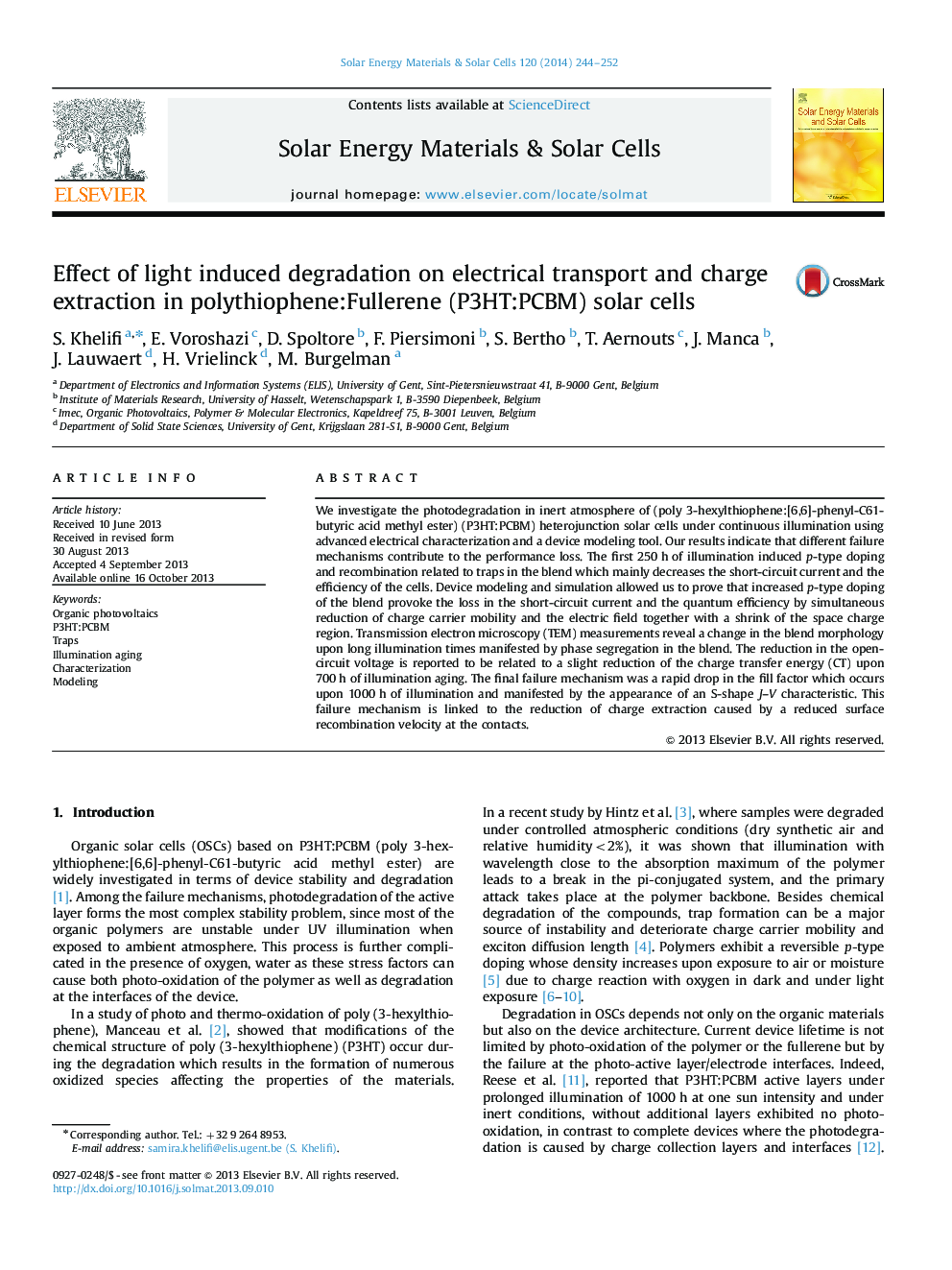| Article ID | Journal | Published Year | Pages | File Type |
|---|---|---|---|---|
| 10248722 | Solar Energy Materials and Solar Cells | 2014 | 9 Pages |
Abstract
We investigate the photodegradation in inert atmosphere of (poly 3-hexylthiophene:[6,6]-phenyl-C61-butyric acid methyl ester) (P3HT:PCBM) heterojunction solar cells under continuous illumination using advanced electrical characterization and a device modeling tool. Our results indicate that different failure mechanisms contribute to the performance loss. The first 250Â h of illumination induced p-type doping and recombination related to traps in the blend which mainly decreases the short-circuit current and the efficiency of the cells. Device modeling and simulation allowed us to prove that increased p-type doping of the blend provoke the loss in the short-circuit current and the quantum efficiency by simultaneous reduction of charge carrier mobility and the electric field together with a shrink of the space charge region. Transmission electron microscopy (TEM) measurements reveal a change in the blend morphology upon long illumination times manifested by phase segregation in the blend. The reduction in the open-circuit voltage is reported to be related to a slight reduction of the charge transfer energy (CT) upon 700Â h of illumination aging. The final failure mechanism was a rapid drop in the fill factor which occurs upon 1000Â h of illumination and manifested by the appearance of an S-shape J-V characteristic. This failure mechanism is linked to the reduction of charge extraction caused by a reduced surface recombination velocity at the contacts.
Related Topics
Physical Sciences and Engineering
Chemical Engineering
Catalysis
Authors
S. Khelifi, E. Voroshazi, D. Spoltore, F. Piersimoni, S. Bertho, T. Aernouts, J. Manca, J. Lauwaert, H. Vrielinck, M. Burgelman,
